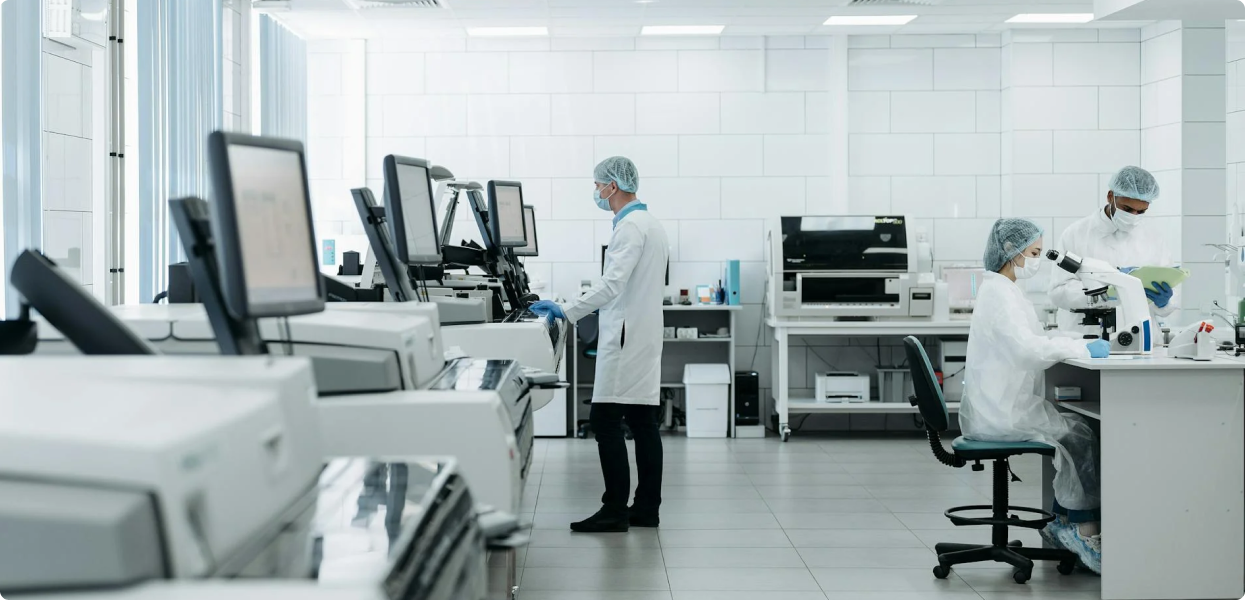Medical devices must meet the highest quality standards to meet patient safety concerns. This means devices must be effective, defect-free, and minimize patient harm. For manufacturers, medical devices must also display consistency and conformity in performance and manufacturing while meeting current regulatory compliance.
With AI-driven automated inspection tools, all of this becomes possible, thanks to streamlined and reliable platforms that can detect even the most subtle flaws and defects.
The High Cost of Medical Device Defects
In 2024, product recalls surged across multiple industries, reaching an incredible six-year
high. The industry that saw the most recalls? Medical devices. Issues included device malfunctions and failures, risks to patient safety (such as increased infections and disease due to functional and manufacturing defects), and overall quality control problems.
For the medical device industry, declining quality and a surge in product recalls bring significant challenges. Recalls often lead to legal liabilities, reputational damage, and a loss of consumer trust. This is especially alarming given the unprecedented number of recalls the industry faced in 2024.
Instead of solely relying on manual inspection, where human error and inefficiencies can arise, the medical industry can enhance its processes with AI-powered automated visual inspection. By augmenting human expertise with AI-driven tools, manufacturers can improve inspection accuracy, increase throughput, and enable manual inspectors to focus on more complex quality assessments.
Regulatory Compliance and Risk Mitigation
AI-powered computer vision models can enhance medical device production and reduce recalls by minimizing human error and inconsistencies in the inspection process. Today, medical devices must comply with both the FDA’s Quality System Regulation (QSR)
and the International ISO 13485 standard, which ensures medical devices meet strict standards on:
- Device Design And Validation
- Good Manufacturing Practices (GMP)
- Complaint Investigations
- Post-Market Surveillance
- Labeling
- Risk Management
- Biocompatibility Testing
- Sterilization
- Electrical Safety
The myriad of compliance standards for medical devices is vast and complex.
Manufacturers can conduct manual inspections and quality checks, but the risk of human error increases, especially under tight deadlines or staffing constraints. As a result, non-compliance remains a constant risk.
The most effective way to ensure your medical devices comply with stringent U.S. and international standards is to implement AI-powered automated visual inspection.
Medical device manufacturers can harness AI-powered automated inspection models to enhance quality control, minimize errors, and detect even the most subtle defects with precision. By integrating seamlessly with existing hardware, these advanced deep learning and transformer-based solutions enable faster, more accurate inspections, improving throughput while maintaining compliance.
With an auditable record of model versions, training data, exception handling, and manufacturing line overrides, Akridata helps manufacturers confidently meet stringent regulatory standards, including ISO 13485, ensuring consistent quality and compliance at scale.
Case in Point: Balancing Speed and Accuracy at Scale
Another medical device manufacturer faced a different set of challenges. Their fast-paced production environment created mounting pressure to meet throughput targets, maintain accuracy, and comply with stringent industry standards, all without compromising product quality. This high-stakes balancing act led to inaccurate part flagging, with a rise in both false positives and false negatives. Despite using a legacy AI-powered inspection tool and repeatedly tuning the model, their processes still failed to meet evolving quality expectations.
These conflicting demands—rapid production, flawless quality control, and strict compliance—created the ultimate catch-22: how to sustain speed without sacrificing safety or performance.
By adopting Akridata, this leading medical device company transitioned to a more reliable inspection process that reduced false positives by 40% and false negatives by 30%. The result: dramatically lower inventory wastage, enhanced process efficiency, and a continued reputation for excellence among consumers and regulatory bodies alike.
Scaling Production Without Sacrificing Quality
The need for more medical devices in the U.S. and abroad is increasing every year, thanks to patient knowledge of innovative treatment options and the prevalence of chronic diseases. In the U.S. alone the medical device market size is projected to reach an estimated value of $314.96 billion USD by 2032.
This continued demand for medical devices means manufacturers must be able to not only keep up with high-quality device production but also deliver faster, more reliable inspections to get those devices to market.
While a human-led inspection force might be able to spot individual errors in smaller batches of products, this task becomes increasingly difficult as device manufacturing scales up, even more so if there are multiple manufacturing facilities.
Differences, even minor, in device design, operation, or inspection processes can all lead to defects that put consumer safety at risk and put manufacturers on the line for recalls, lawsuits, and reputational damage.
The best way to avoid these scalability issues is to utilize a customized AI model that optimizes inspection accuracy across multiple production lines. Akridata determines whether identified irregularities are acceptable cosmetic variations or true functional defects that will negatively impact device performance. Additionally, captured model data can identify the root cause of defects, so corrective methods are enacted in the future, saving time, money, and labor.
The Future of AI-Driven Medical Device Inspection
The risks of manual, human-led quality and safety inspections are too high for medical device manufacturers. Customer safety is always the peak priority for device manufacturers, along with achieving performance and manufacturing consistency, device quality, and compliance regulations.
To meet the demands of the next decade, medical device manufacturers must seek out automated inspection AI-solutions that reduce human error and offer scalability during the production and inspection process.
With tools like Akridata, manufacturers are ensured superior quality control, compliance, and efficiency during their medical device inspection procedures. By analyzing image data to identify subtle variations in device construction, detect defects, and categorize common issues, Akridata provides the actionable insights manufacturers need to quickly address the root causes of defects.
Discover how leading manufacturers are reducing defects, increasing efficiency, and cutting costs with AI-powered inspection.
Get The True Cost of Manual Inspection in Manufacturing Whitepaper



No Responses